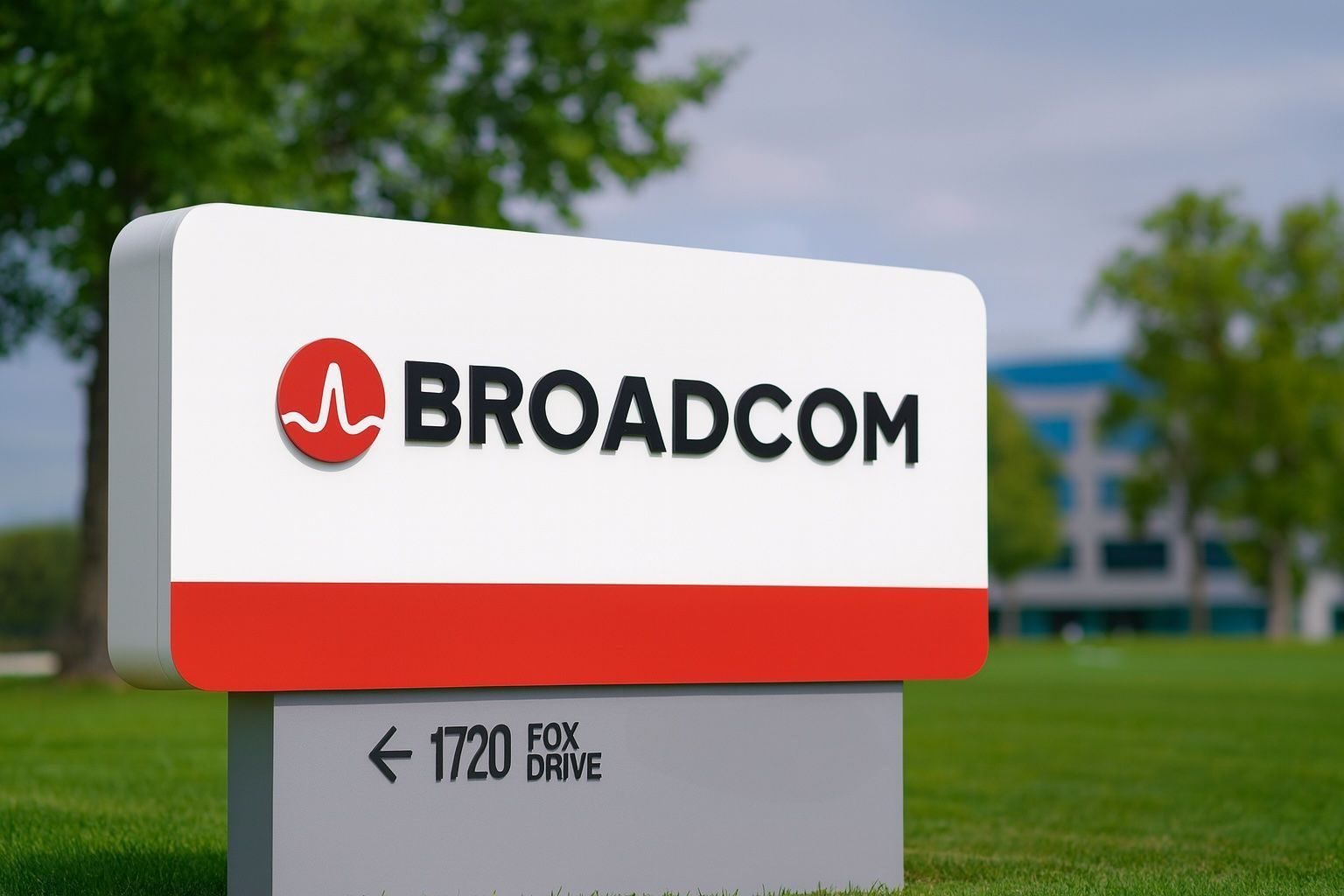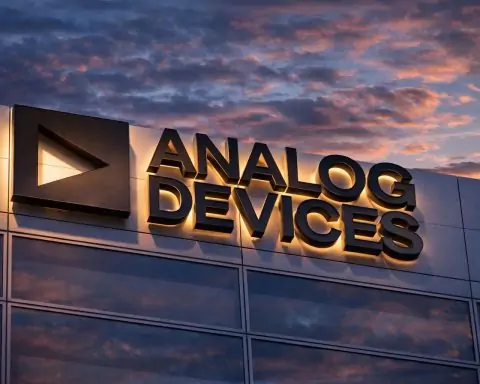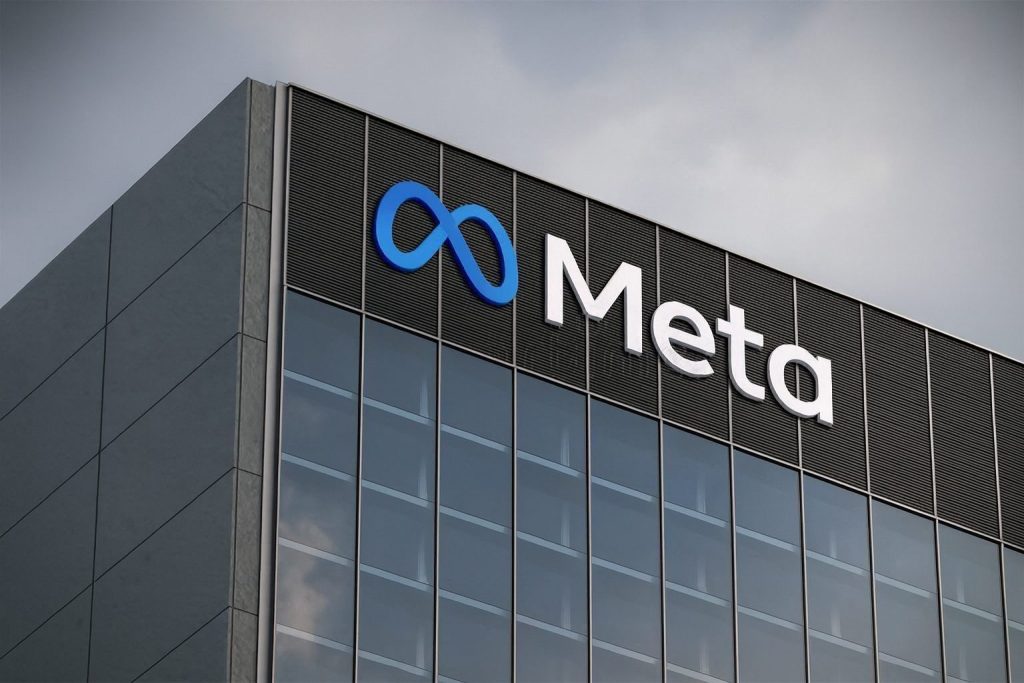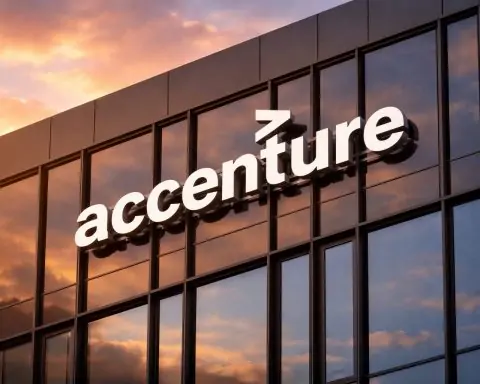Broadcom Inc. (NASDAQ: AVGO) is heading into its December 11, 2025 earnings report at the center of two powerful storylines: explosive demand for artificial intelligence (AI) chips and a highly controversial overhaul of VMware licensing that is reshaping enterprise IT budgets worldwide. [1]
The company has just reported record AI revenue growth, booked a multibillion‑dollar custom chip order, and reinforced its position as both a semiconductor powerhouse and a major infrastructure software vendor. At the same time, its VMware business is driving strong financial results while provoking lawsuits, customer migrations, and regulatory scrutiny in Europe. [2]
Broadcom at a Glance: From Chips to Infrastructure Software
Broadcom designs and supplies a wide range of semiconductor and infrastructure software products, spanning:
- Custom AI accelerators and networking silicon for hyperscale data centers
- Ethernet switches and routing chips used in AI clusters and cloud networks
- Storage, broadband and wireless connectivity components
- Enterprise software, including security, mainframe tools and, since 2023, VMware’s virtualization and cloud management portfolio
The acquisition of VMware, which closed on October 30, 2023, transformed Broadcom into a hybrid hardware–software giant. [3]
That bet is clearly visible in the numbers. For fiscal 2024, Broadcom’s revenue climbed to about $51.6 billion, up roughly 44% year over year, with infrastructure software—largely VMware—growing to about $21.5 billion. AI‑related semiconductor revenue was around $12.2 billion, more than tripling from the prior year. [4]
These shifts underpin Broadcom’s strategy: use highly specialized AI chips and premium, “mission‑critical” software to lock in large enterprise and cloud customers.
Record AI Revenue in 2025: Q3 Results and Q4 Guidance
Broadcom’s momentum in 2025 is being driven overwhelmingly by AI.
In fiscal Q3 2025, the company reported:
- Revenue of about $15.95 billion, up roughly 22% year over year
- Adjusted earnings of around $1.69 per share, above Wall Street expectations
- AI‑related semiconductor revenue of about $5.2 billion, up 63% versus the prior year quarter
Management guided for Q4 2025 revenue of roughly $17.4 billion, again ahead of consensus estimates, and projected AI semiconductor revenue of about $6.2 billion—marking the 11th straight quarter of AI growth. [6]
Analysts emphasize four main growth drivers:
- Custom AI accelerators (ASICs and TPUs) built for hyperscalers
- High‑end Ethernet switching and routing for AI data center fabrics
- Enterprise software expansion, including VMware Cloud Foundation (VCF), Tanzu and security products
- Deep, long‑term contracts with a small set of very large cloud and AI customers
This AI‑heavy mix helps explain why Broadcom has become one of the semiconductor sector’s standout earners even as broader tech indices have wobbled.
Inside Broadcom’s AI Hardware Bet: Custom Chips and Tomahawk Networking
Broadcom is positioning itself as the quiet enabler of the AI boom: less visible than GPU maker Nvidia, but deeply embedded in hyperscaler infrastructure.
Custom AI Accelerators for Hyperscalers
Rather than competing head‑on in general‑purpose GPUs, Broadcom focuses on application‑specific integrated circuits (ASICs) and tensor processing units (TPUs) designed around the needs of individual cloud providers and AI labs.
Analysts describe Broadcom as a key supplier of these custom AI chips to Google and a likely beneficiary of the broader industry shift from off‑the‑shelf GPUs toward more efficient, tailored accelerators. Some research commentary even suggests Broadcom is a significant supplier to both Google and OpenAI in the AI chip race, although the companies themselves typically keep such arrangements confidential. [8]
Tomahawk 6 and Next‑Generation Ethernet for AI
The other half of the story is networking. Massive AI training clusters can involve hundreds of thousands of GPUs, and the bottleneck is often how fast those chips can talk to each other.
In June 2025, Broadcom began shipping Tomahawk 6, its latest high‑end Ethernet switch chip, built on TSMC’s 3‑nanometer process. The device roughly doubles the performance of its predecessor, integrates multiple dies in a single package via chiplet technology, and is aimed directly at large‑scale AI data centers. Importantly, Broadcom continues to bet on Ethernet—rather than Nvidia’s InfiniBand—as “good enough” for AI networking at hyperscale. [9]
Alongside Tomahawk 6, Broadcom has introduced Tomahawk Ultra and next‑generation Jericho routing chips that are explicitly tied to its AI revenue guidance for the back half of 2025 and into 2026. [10]
The $10 Billion AI Chip Order and a Potential Anthropic Link
One of the most eye‑catching Broadcom headlines this autumn was a $10+ billion AI chip booking tied to specialized AI server racks.
- Broadcom’s stock jumped roughly 8% on news of the order, which market coverage described as more than $10 billion in AI chip deals. [11]
- Subsequent research from Mizuho Securities suggested that Anthropic, the fast‑growing AI model developer, may be the unnamed customer behind the order, although neither company has confirmed this. [12]
For investors and competitors, the takeaway is simple: Broadcom is winning multi‑year, platform‑scale AI hardware deals with some of the most aggressive spenders in the AI ecosystem.
Stock Performance, Stock Splits and Valuation
Broadcom sits among the most valuable semiconductor companies in the world.
From Trillion‑Dollar Milestone to November’s Rally
In late 2024, the company briefly surpassed $1 trillion in market value after a strong AI‑driven earnings report, putting it in an elite club of trillion‑dollar tech firms. [13]
In November 2025, AVGO has again been one of the rare tech gainers:
- MarketWatch data show Broadcom shares up around 7–8% for the month, even as many peers declined. [14]
- TradingView analysis notes that the stock has risen roughly 16% since the November 18 launch of Google’s Gemini 3 AI model, helped by Broadcom’s role in designing Google’s tensor processing units. [15]
Wall Street has responded with higher targets: Goldman Sachs recently reiterated a “Buy” rating on AVGO and raised its price target from $380 to $435, citing Broadcom’s strong AI pipeline and robust third‑quarter results. [16]
Stock Splits: 10‑for‑1 in 2024 and a Canadian CDR Split in 2025
Broadcom has also used stock splits to broaden access to its shares:
- In July 2024, the company executed a 10‑for‑1 stock split, making each pre‑split share equivalent to 10 post‑split shares. [17]
- In Canada, the Broadcom CAD‑hedged Canadian Depositary Receipt (CDR) is undergoing a 6‑for‑1 split, with split‑adjusted trading beginning on November 14, 2025. [18]
These moves are designed to improve liquidity and keep per‑share prices in a more accessible trading range, particularly for retail investors.
VMware: Growth Engine and Source of Controversy
If AI chips are Broadcom’s primary growth engine, VMware is its biggest lightning rod.
Financial Upside
VMware has quickly become central to Broadcom’s software story. In fiscal 2024, infrastructure software revenue—largely VMware—rose to about $21.5 billion, helping drive the company’s 44% overall revenue growth. [19]
Analyst coverage and industry reporting suggest VMware has lifted Broadcom’s software margins and boosted its recurring revenue base, even as the company streamlines product lines and exits non‑core assets such as the End User Computing (EUC) division, which it agreed to sell to KKR for around $4 billion. [20]
Licensing Changes, Price Hikes and Customer Backlash
The same changes that make VMware more profitable are causing major pain for many customers:
- Broadcom has shifted VMware heavily toward subscription‑based bundles centered on VMware Cloud Foundation (VCF), reducing or ending many perpetual‑license options and collapsing SKUs into fewer, more comprehensive packages. [21]
- Reporting from TechRadar and others describes enterprises facing cost increases of 8–15 times under the new model, pushing some CIOs to seek third‑party support or alternative platforms. [22]
- NetworkWorld’s long‑running VMware/Broadcom tracker notes that some European customers have seen price hikes of up to 1,500%, sparking legal challenges and emergency migration projects. [23]
European cloud providers’ association CISPE has gone so far as to file a legal challenge seeking to overturn the European Commission’s approval of the VMware deal, arguing that Broadcom’s licensing changes could entrench VMware as a “gatekeeper” and restrict competition. [24]
At the same time, VMware is making concessions:
- Support lifecycles for products like VCF 9.0 and vSphere have been extended, partly in response to CIO backlash. [25]
- VMware Explore 2025 focused heavily on VCF 9.0 as a unified private‑cloud and “private AI” platform, with expanded Kubernetes and data services capabilities, integrated AI features in VMware Avi, and new Tanzu Data Intelligence offerings. [26]
The net result is a highly polarized customer base: some organizations report significantly higher costs, others—such as mid‑size enterprise case studies—claim net savings under the new bundles, and many are still crunching the numbers. [27]
Competitors Smell Opportunity
Competitors including Nutanix, Scale Computing and various cloud providers are actively courting disgruntled VMware customers, advertising migration paths and claiming increased deal flow driven by Broadcom’s strategy. [28]
So far, analysts characterize the reaction as serious but not yet a mass exodus: VMware remains deeply embedded in many enterprise environments, and full migrations can take years and substantial capital. [29]
What’s Next: Q4 2025 Earnings and Key Issues to Watch
Broadcom will report its fourth‑quarter and full‑year 2025 results after the market close on December 11, 2025, followed by a conference call at 2:00 p.m. Pacific time. [30]
For investors, customers and partners, several themes will be in focus:
- AI Revenue Trajectory
- Does AI semiconductor revenue meet or exceed the roughly $6.2 billion target?
- How quickly are new orders—including the $10+ billion deal—translating into recognized revenue and backlog? [31]
- Margin and Cash‑Flow Sustainability
- Can Broadcom maintain high margins as it ramps custom AI hardware and invests in next‑generation networking?
- How much of VMware’s cost optimization flows through to free cash flow versus reinvestment?
- VMware Churn vs. Upsell
- Are price hikes and licensing changes causing meaningful customer churn, or are upsell and expansion in core accounts more than offsetting losses?
- What is the pace of migrations to VCF 9.0 and Tanzu‑based platforms? [32]
- Regulatory and Legal Risk
- How does Broadcom view ongoing European scrutiny of VMware licensing and legal disputes with large customers and governments? [33]
- Macro and Geopolitical Exposure
- Prior commentary has highlighted trade and export‑control risks—especially relating to China—as a factor for Broadcom’s data center business. Observers will watch for updated language on that front. [34]
Broadcom’s Strategic Position: Opportunity and Risk in Equal Measure
As of late November 2025, Broadcom is one of the clearest pure‑play beneficiaries of the AI infrastructure build‑out:
- It sells custom accelerators to some of the biggest AI players.
- It powers the Ethernet fabric that lets clusters of GPUs and TPUs actually scale.
- It owns a software platform (VMware) that many enterprises still rely on for private cloud and hybrid environments.
But the same factors that make Broadcom attractive also amplify its risks:
- Heavy dependence on a small set of mega‑customers in AI
- Rising competition from Nvidia, AMD, Marvell and others in AI and networking
- Political and regulatory scrutiny, especially in Europe
- Deep customer resentment over VMware pricing and licensing shifts
For now, Broadcom’s financial results show that AI demand and VMware’s profitability are outweighing the backlash. Whether that remains true into 2026 will depend on how fast alternatives mature, how regulators respond, and whether Broadcom can keep balancing aggressive monetization with the long‑term trust of its enterprise base.
This article is for informational purposes only and does not constitute investment advice or a recommendation to buy or sell any security.
References
1. investingnews.com, 2. www.investopedia.com, 3. investors.broadcom.com, 4. last10k.com, 5. www.investopedia.com, 6. www.reuters.com, 7. www.ebc.com, 8. seekingalpha.com, 9. www.reuters.com, 10. www.reuters.com, 11. rollingout.com, 12. www.barrons.com, 13. www.barrons.com, 14. www.marketwatch.com, 15. www.tradingview.com, 16. site.financialmodelingprep.com, 17. companiesmarketcap.com, 18. www.moomoo.com, 19. last10k.com, 20. www.graphon.com, 21. www.networkworld.com, 22. www.techradar.com, 23. www.networkworld.com, 24. www.networkworld.com, 25. www.networkworld.com, 26. www.channelfutures.com, 27. www.networkworld.com, 28. www.networkworld.com, 29. www.networkworld.com, 30. investingnews.com, 31. www.reuters.com, 32. www.networkworld.com, 33. www.networkworld.com, 34. www.investopedia.com










